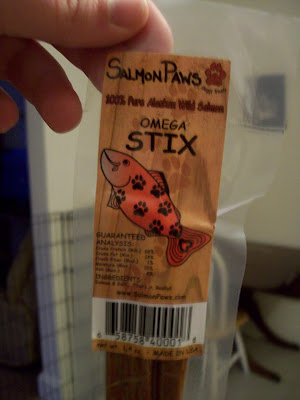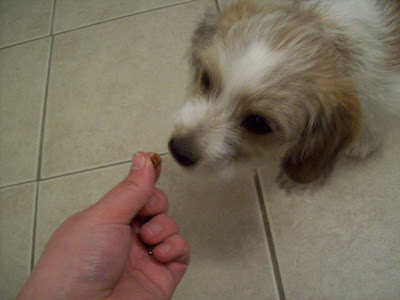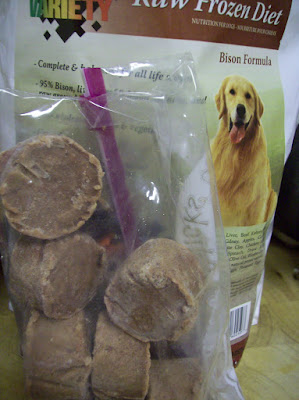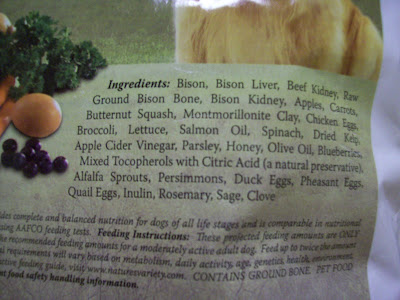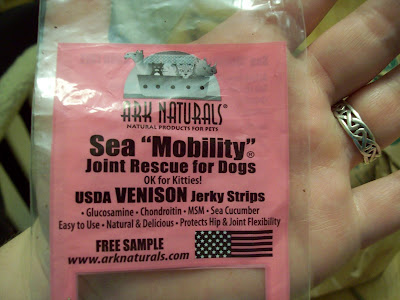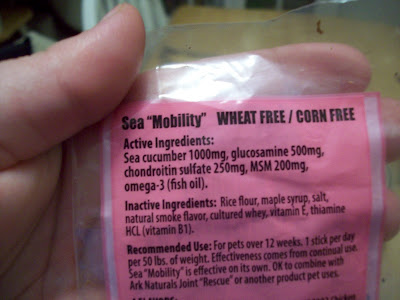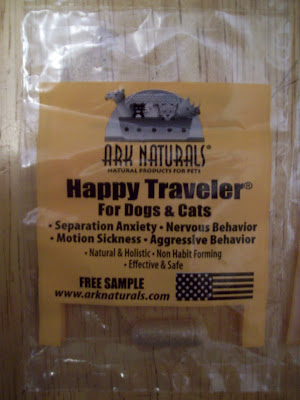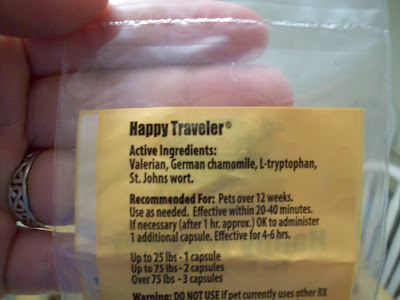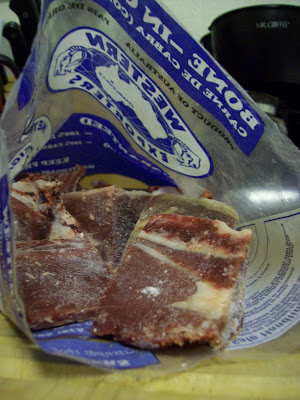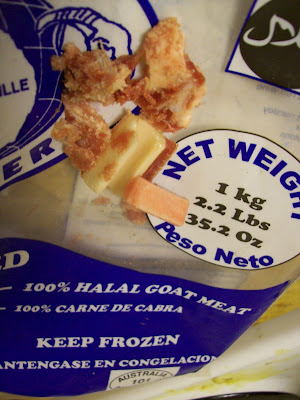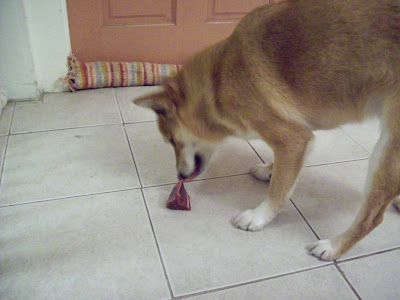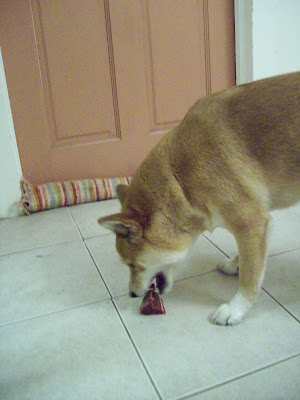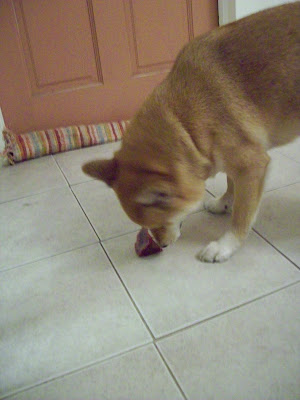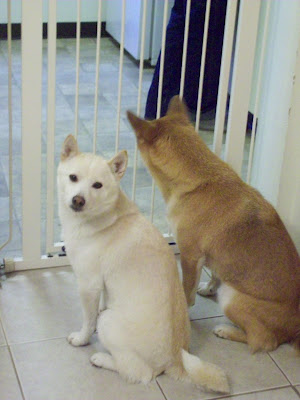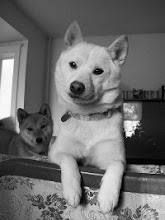Including fish, seaweed, etc.
So when I found this (on bestbullysticks, also a product reviewed positively by WDJ):
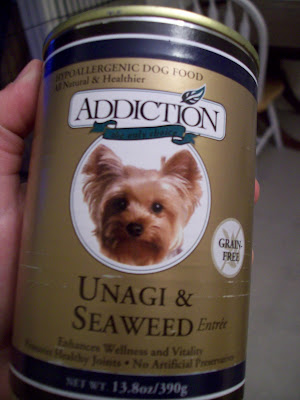
I was super excited. Addiction's Unagi (eel) and Seaweed entree.
It is a novel protein and grain free formula which therefore caters to many dog suffering multiple allergies.
Ingredients:
Eel, Venison, Potatoes, Carrots, Peas, Carrageenan, Cassia Gums, Dried Seaweed, Garlic, Taurine, Calcium Carbonate, Choline Chloride, Zinc Sulphate, Ferrous Sulphate, Vitamin E Supplement, Copper Sulphate, Manganese Sulphate, Niacin Supplement, Sodium Selenite, Thiamine Mononitrate, Calcium Pantothenate, Vitamin A Supplement, Riboflavin Supplement, Calcium Iodate, Vitamin B12 Supplement, Pyridoxine Hydrochloride, Vitamin D3 Supplement, Folic Acid
Looks fine, right?
I open it. Date on can is good, packaging intact. Looks like a normal dog food with nice chunks, you can see the seaweed and potatoes. You can smell the meat, sort of like a sushi-type smell. I think - awesome! the dogs will LOVE it.
Not so much.
Not one single dog ate any of it (which, are three dogs in total). Not even Kitsune the food guru. Not even the ravenous puppy. Not even the picky Tsuki.
So. If your dogs liked this food, let me know!
